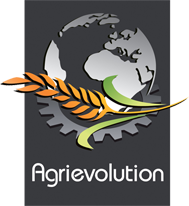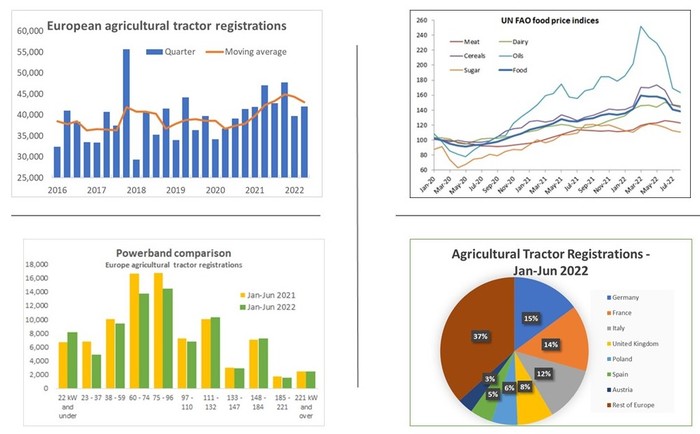Business climate improving following sharp decline
On 22nd September 2022 CEMA released its regular tractor registrations press release related to the first six months of the year. Please see below the press release summary.
Brussels, 22nd September 2022 - Overall, some 108,800 tractors were registered across Europe[1] in the first six months of 2022, according to numbers sourced from national authorities. Of these registrations, 31,900 tractors had an engine power of 37kW (50 hp) and under and 76,900 of 38kW and above. CEMA considers that 81,800 of these vehicles are agricultural tractors. The rest are made up of a variety of vehicles which are sometimes classified as tractors, which includes quad bikes, side-by-sides, telehandlers or other equipment. An overview of the total tractor registrations can be found in the annex, including an indication of the proportion of registrations in each country which can be classified as agricultural tractors.
Agricultural tractor registrations for the first semester decreased by 8.1%, compared with the opening six months of 2021. The number of machines registered in each month of the year to date has been lower than a year before. However, while the year started almost on a par with 2021 for January 2022 (-2% vs 01/21) and February 2022 (-5%), further disruptions linked to the current geopolitical situation added their impact and registrations declined more sharply in March (-7%), April (-12%), May (-5%) and June (-15%). As the first half of 2021 saw unusually strong registrations, a decline was perhaps to be expected and the number of agricultural tractors registered in the first half of 2022 was still the second highest in at least eight years.
Concerns remain with continuing production delays; energy reduction plans create additional uncertainty
The number of tractors registered in Europe during the first semester of 2022 would no doubt have been even higher were it not for continuing disruption to global supply chains. These are mainly due to the long-term impact of the Covid-19 pandemic but have been made worse after February 2022 due to the current geopolitical situation. These disruptions have led to both bottlenecks in the supply of raw materials and components to manufacturers and price increases for those same goods.
Additional concerns are reported over the possible impact of measures aimed at preparing Europe for potential future energy supply disruptions and high prices: these could have a very significant impact on our industry and on our supply base.
Surging agricultural commodity prices but uncertainty ahead
During the last months demand for tractors and other agricultural machinery in Europe remains robust, helped by strong agricultural prices which according to the global food price index published by the United Nations Food & Agriculture Organisation (UN FAO), reached unprecedented levels earlier in the year. Nevertheless, at the same time, farmers were also challenged with a similar unprecedented rise in prices for some key inputs, such as fuel, fertiliser and animal feed. With prices likely to remain volatile for some time, the future of farm incomes is highly uncertain, despite temporary derogations and support schemes proposed at European and National levels.
Registrations drop not equal across the whole tractor power range
Agricultural tractor registrations in January to June 2022 were on a par with or lower than the same months of 2021 across most of the power range, except for the smallest machines (22kW and under). The biggest falls were for machines between 23kW and 96kW; over half of tractors registered were in this power range but registrations declined by 16% between 2021 and 2022. For tractors with powers of 97kW and above, registrations were only 2% lower than a year ago.
Given the supply chain disruptions, these trends might reflect availability of machines as much as demand for them.
Significant country differences remain across Europe
Agricultural tractor registrations declined in each of the seven largest European markets but they still accounted for over six in every ten tractors registered in Europe. The two biggest agricultural tractor markets in Europe remain France and Germany (Graph 4), with those two countries accounting for almost 30% of all tractors registered in Europe in the opening six months of 2022. Registrations in these two countries fell by 7% and 5%, respectively. Italy, Poland and Spain, all of which saw very high registrations in 2021, have recorded faster declines so far in 2022. Only a few countries, mainly in Eastern Europe, registered more agricultural tractors than a year before.
Further insights by economic experts from CEMA national associations are available in the full press release. The CEMA Barometer is available monthly here.
[1] Figures cover most EU markets and some non-EU countries. See Annex for full list of countries included.


